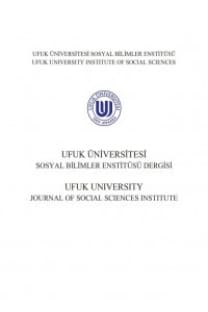Dünya Ekonomisindeki Değişimin Çok Uluslu Şirketler Üzerindeki Yansımaları
Çok uluslu şirket, gelişmekte olan ülkelerin çok uluslu şirketleri, BRIC, değer zinciri
THE EFFECTS OF CHANGE IN THE WORLD ECONOMY ON THE MULTI NATIONAL COMPANIES
MNC, EMNC, BRIC, value chain,
___
- AKTAŞ, R, AKÇAOĞLU E. “İstersen Markalaş(ma):Küresel Değer Zincirinde Türk Firmalarının Konumu” TMMOB Makina Mühendisleri Odası Marka Yönetimi Sempozyumu, Gaziantep, 2005.
- BONAGLIA, F, ÇOLPAN, A, GOLDSTEIN, A.“Industrial Upgrading in the White Goods Global Value Chain: The Case of Arçelik”, ITEC Working Paper Series, 08-04, 2008.
- BUCKLEY, P, CASON, M. The Future of Multinational Enterprise, Macmillan and Co, London, 1976.
- DAHLMAN, C.” Innovation Strategies of Three of the BRICS: Brazil, India and China— What Can We Learn from Three Different Approaches?,SLPTMD Working Paper Series No:023, University Of Oxford, Deparment of International Development, 2009.
- FAN,Y. “The Globalisation of Chinese Brands”, Marketing Intelligence & Planning 24-4: 379, 2006.
- GEREFFI, G. “International Trade and Industrial Upgrading in the Apparel Commodity Chain”, Journal of International Economics, Vol. 48, 1999.
- KNIIVILA, M. “Industrial Development And Economic Growth: Implications for Poverty Reduction and Income Inequality, Industrial Development for the 21. Century” , 295-333, United Nations, 2007.
- LEME, P. “The B. In Brics: Unlockıng Brazil Growth Potential: BRIC’s and Beyond”, Goldman Sachs, S:78-87, 2007.
- MATHEWS, R. Fordizm, Flexibility and Regional Productivity Growth, Arizona State University, 1995.
- TEPAV, Türkiye’nin Rekabet Gücü için Sanayi Politikası Çerçevesi, TEPAV, Ankara,2007.
- T.C. SANAYİ VE TİCARET BAKANLIĞI,Türkiye Sanayi Stratejisi Belgesi (2011-2014), Sanayi ve Ticaret Bakanlığı, Ankara, 2010.
- UNCTAD, World Investment Report, UNCTAD, New York and Geneva, 2005.
- UNCTAD, South-South Trade in Asia: The Role of Regional Trade Agreements, UNCTAD, New York and Geneva, 2008.
- UNCTAD, World Investment Report, UNCTAD, New York and Geneva, 2009. www.forbes.com www.ft.com
- ISSN: 2146-7676
- Başlangıç: 2011
- Yayıncı: Ufuk Üniversitesi
Avrupa Birliği Ülkelerinde Bölgelerarası Gelişmişlik Farklarını Azaltıcı Önlemler
AVRUPA BİRLİĞİ’NDE FİKİRSEL SOSYALLEŞME SÜRECİ
Dünya Ekonomisindeki Değişimin Çok Uluslu Şirketler Üzerindeki Yansımaları
DÜNDEN BUGÜNE TÜRKİYE-RUSYA EKONOMİK İLİŞKİLERİNDE ÜÇ BÜYÜK DÖNEM
Küreselleşen Yaşlılık ve Yaşlı Bakım Üzerine Eleştirel Bir Yaklaşım
